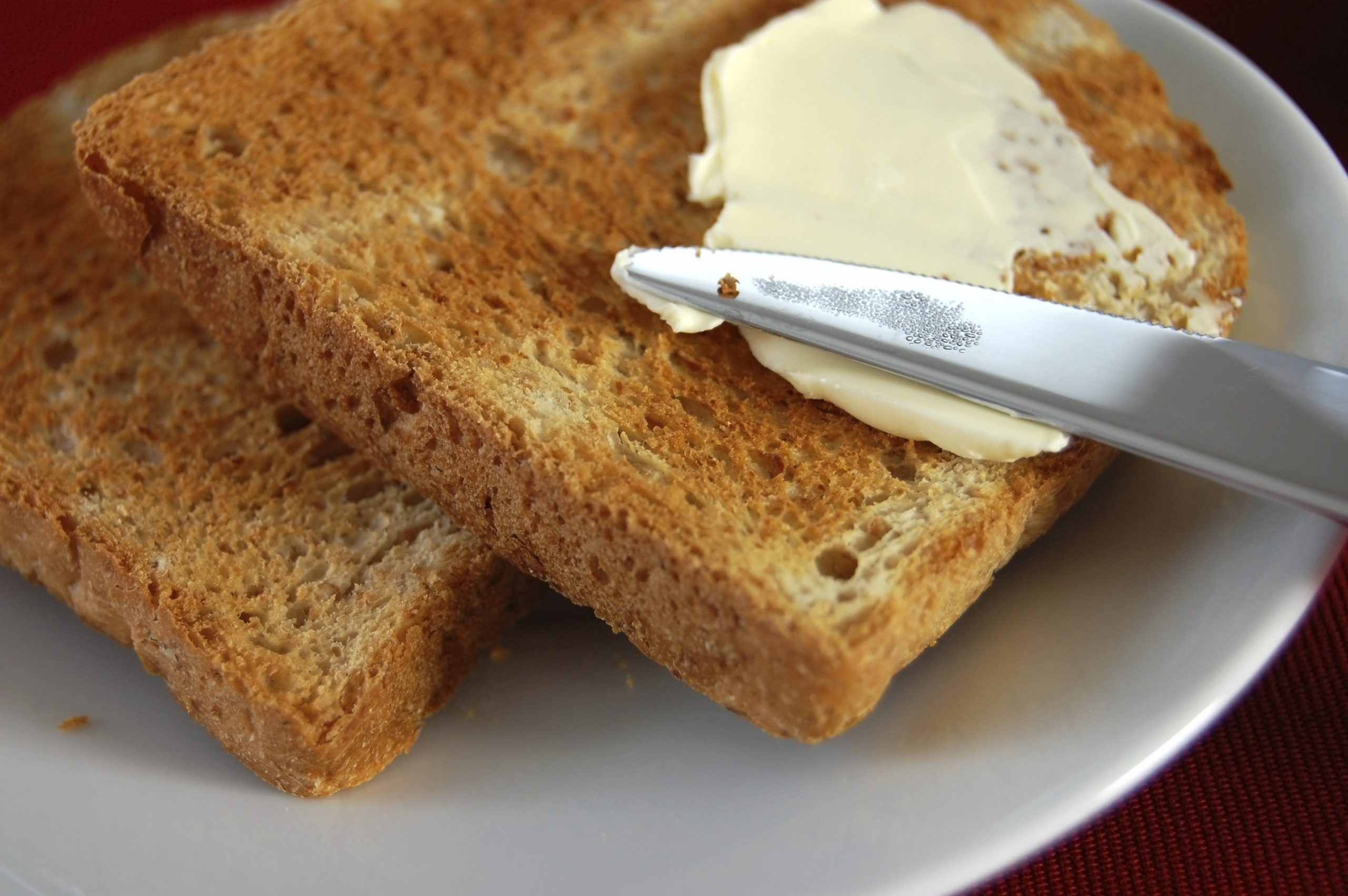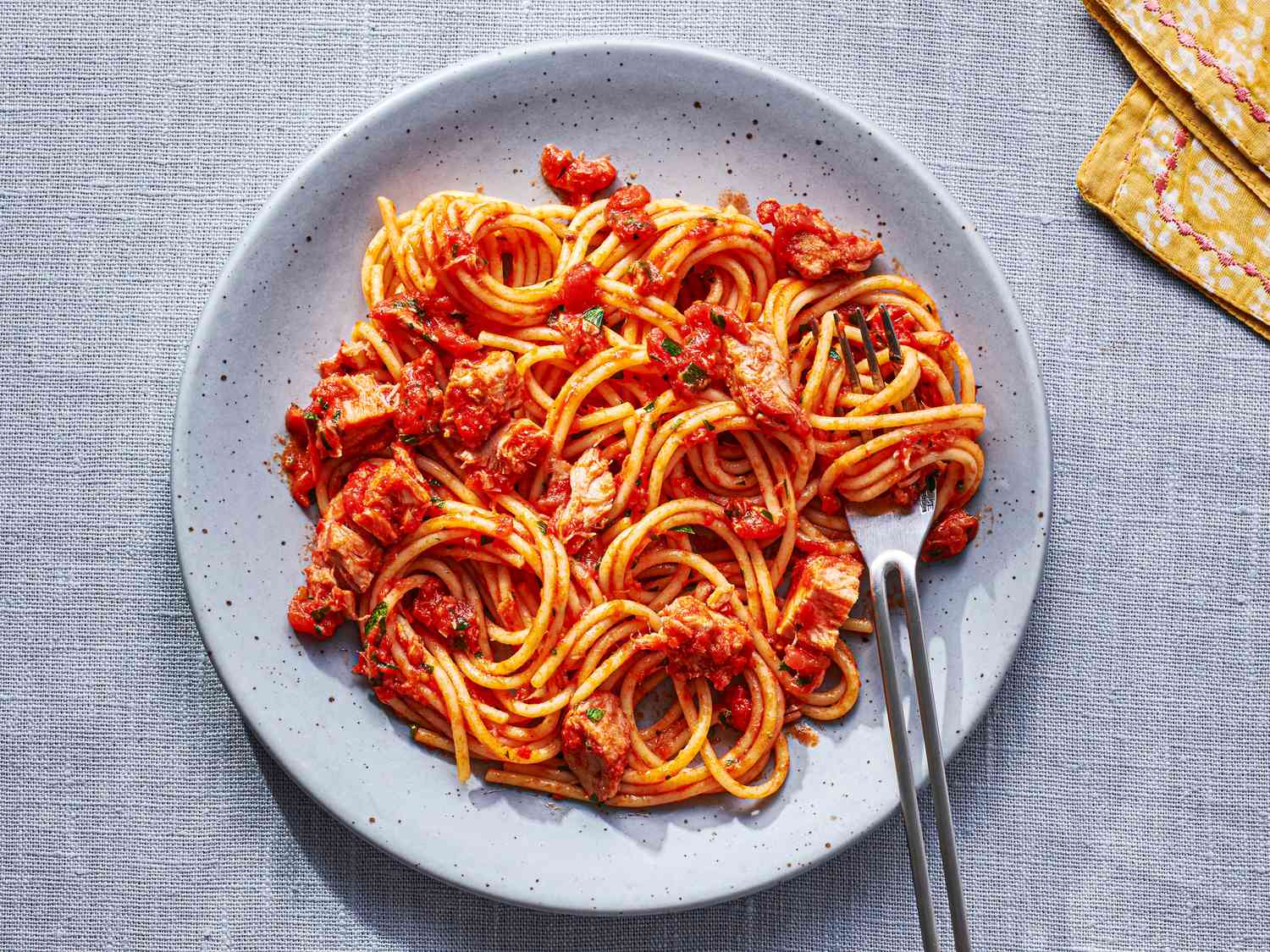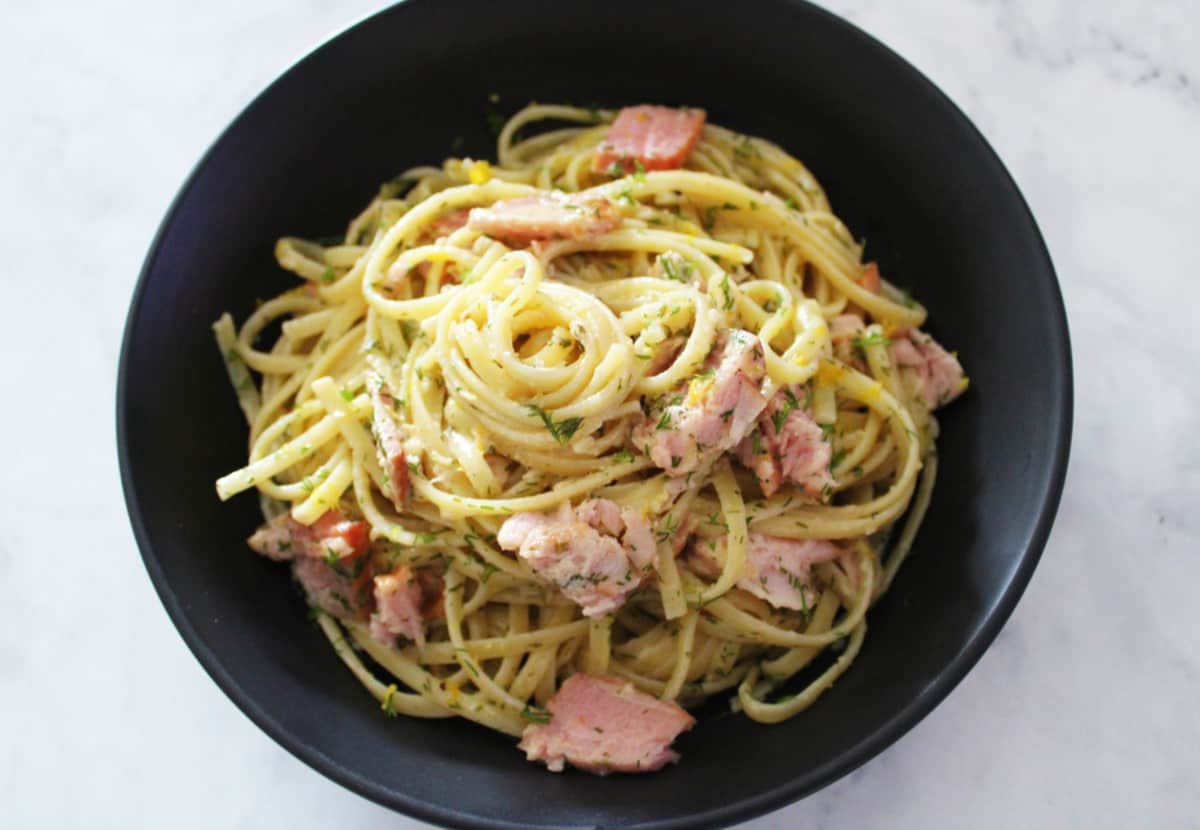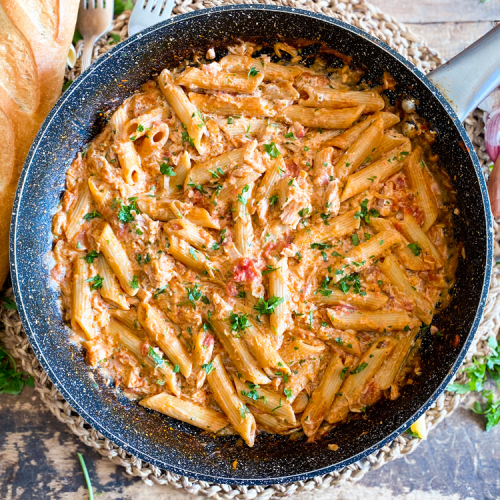Calories serve as a fundamental unit of measurement when it comes to assessing the energy content of the foods we consume. Understanding the calorie content in common foods is essential for making informed dietary choices and maintaining a balanced and healthy lifestyle.
However, a standard slice of bread typically contains around 70-110 calories, while a tablespoon of regular butter has about 102 calories. So, when you combine a slice of bread with a tablespoon of butter, you’re looking at a total of approximately 172-212 calories, depending on the type of bread used.
Here, you will understand the calories in a slice of bread and butter helps us see how they contribute to our diet. It also reminds us to be mindful of what we eat to reach our health goals.
Calories in Butter
| Type of Butter | Calories per 1 tablespoon (14g) |
| Regular Unsalted Butter | 102 calories |
| Salted Butter | 102 calories |
| Clarified Butter (Ghee) | 112 calories |
| Margarine | Approximately 102 calories |
| Reduced-Fat Butter or Margarine | Around 50-60 calories |
Calories in a Slice of Bread

| Type of Bread | Calories per Standard Slice |
| White Bread | 70-80 calories |
| Whole Wheat or Whole Grain Bread | 80-110 calories |
| Multigrain Bread | 80-110 calories |
| Specialty Breads | Varies, often > 100 calories |
| Thin Sliced Bread | 40-50 calories |
| High-Fiber Bread | Varies, similar to whole wheat or whole grain bread |
Why is buttered bread so good?
Buttered bread tastes so good because many people just love the combination. While there’s no special scientific reason, it’s a classic and tasty choice. Some people even say that putting butter on the bread before toasting it makes it even better, as it melts and adds a delicious flavor while keeping the bread crisp. However, some prefer spreading butter on warm toast, and that’s tasty too. It’s all about what you like.
Is eating bread with butter healthy?
Yes, Eating bread with butter can be okay if you don’t overdo it. It’s better for you when you choose whole grain or whole wheat bread over white bread. Sourdough and rye bread are good choices too. But you need to be careful with butter because it has a lot of salt and fat. So, pay attention to how much butter you use. Even though some people might think butter is not healthy, having buttered bread as part of a balanced diet can be fine. Butter has calcium and can be good for you, like helping with weight and reducing cancer risks.
Nutrition Facts Full bread and butter
| Nutrient | Amount Per Serving | % Daily Value* |
| Calories | 170 | |
| Total Fat | 12 grams | 15% |
| – Saturated Fat | 7.5 grams | 38% |
| – Trans Fat | 0.5 grams | |
| – Polyunsaturated Fat | 0.8 grams | |
| – Monounsaturated Fat | 3.1 grams | |
| Cholesterol | 31 milligrams | 10% |
| Sodium | 214 milligrams | 9% |
| Total Carbohydrates | 12 grams | 4% |
| – Dietary Fiber | 0.7 grams | 2% |
| – Sugars | 1.4 grams | |
| Protein | 2.3 grams | |
| Vitamin D | 0.2 micrograms | 1% |
| Calcium | 39 milligrams | 3% |
| Iron | 0.9 milligrams | 5% |
| Potassium | 34.9 milligrams | 1% |
Please note that the “%” Daily Value is based on a 2,000-calorie daily diet, and your daily values may be higher or lower depending on your calorie needs.
Calories and Nutrition Content for Different Bread Types and Products
| Bread Type | Serving Size | Calories | Carbs (g) | Fat (g) | Protein (g) |
| Butter Bread (2 slices) | 168 | 12 | 12 | 2.3 | |
| Publix Butter Bread (1 slice) | 60 | 12 | 0.5 | 3 | |
| Butter Krust (2 slices) | 130 | 25 | 1.5 | 4 | |
| Martin’s Butter Bread (1 slice) | 80 | 14 | 1 | 4 | |
| Merita Butter Bread (1 slice, 26g) | 60 | 12 | 0.5 | 3 | |
| Aldi Butter Bread (1 slice) | 60 | 12 | 0.5 | 3 | |
| Butter Top Wheat Bread (1 slice) | 70 | 13 | 1 | 3 | |
| Peanut Butter Bread (1 slice) | 86 | 3 | 7 | 4 | |
| Martin’s Real Butter Bread (1 slice) | 80 | 14 | 1 | 0 | |
| Bread Slice With Butter (3 slices) | 200 | 18 | 12 | 4 |
Importance of Monitoring Caloric Intake
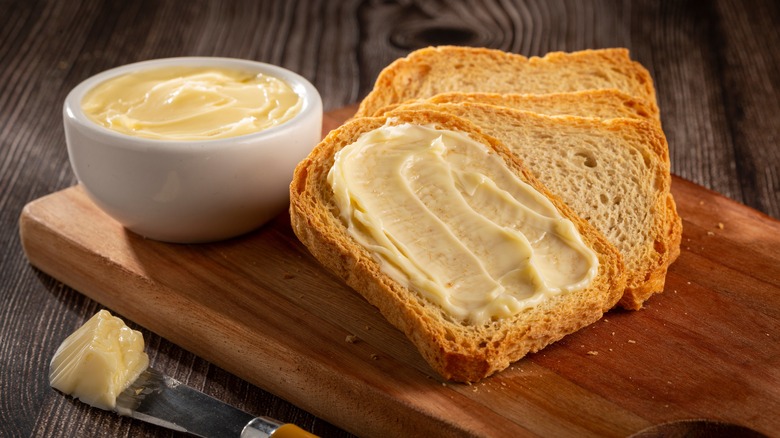
It is crucial for several reasons, also plays a fundamental role in maintaining a healthy lifestyle and managing one’s weight. Here are some of the key reasons why it’s important:
Weight Management: Controlling calorie intake is essential for weight management. If you consume more calories than your body burns, you’re likely to gain weight, while a calorie deficit can lead to weight loss. By monitoring caloric intake, you can make informed decisions about your diet and work toward your weight-related goals.
Health Awareness: Being aware of your daily calorie consumption allows you to make healthier food choices. It encourages a focus on the nutritional value of foods, helping you incorporate a balanced diet rich in essential nutrients.
Preventing Overeating: Moreover, it helps prevent overeating, which can lead to health issues like obesity, diabetes, and cardiovascular diseases. Understanding portion sizes and calorie counts can help you avoid excess consumption.
Nutrient Balance: It is not just about quantity but also quality. Monitoring calories can lead to a greater focus on nutrient-dense foods, ensuring that your diet provides the necessary vitamins, minerals, and macronutrients (carbohydrates, proteins, and fats).
Energy Balance: The number of it you consume directly impacts your energy levels. Knowing your caloric intake can help you ensure that you have enough energy to support your daily activities and exercise routines.
Healthy Aging: As people age, their metabolic rate tends to decrease. It becomes even more important to avoid unwanted weight gain and to maintain overall health as you age.
Customization: Everyone’s caloric needs are different based on factors like age, gender, activity level, and metabolism. It allows you to customize your diet to meet your specific needs, whether you’re trying to lose, maintain, or gain weight.
Mindful Eating: Further, it can encourage mindful eating, which involves paying close attention to what you eat, savoring each bite, and being more in tune with your body’s hunger and fullness cues. This can help reduce overeating and improve your relationship with food.
Accountability: Tracking it provides a sense of accountability. It’s a practical way to stay committed to your dietary goals, whether they involve weight management or improving your overall health.
Supporting Fitness Goals: For those who are physically active, monitoring caloric intake can be essential for optimizing exercise and recovery. It ensures that you have the energy and nutrients necessary to meet your fitness objectives.
FAQ’s
Is bread and butter a healthy breakfast?
Yes, Bread and butter can be a healthy breakfast, depending on the type of bread and butter you choose. Opt for whole grain or whole wheat bread for more nutrients and consider unsalted or grass-fed butter. Enhance the nutritional profile by adding peanut butter or bananas.
Can you eat bread and butter on a diet?
Yes, you can have bread with butter while aiming to lose weight. To manage calorie intake, choose whole wheat or whole grain bread. Studies show that whole grains can help with weight loss and satiety. It’s important to maintain a calorie deficit while enjoying bread and butter on a diet.
Is bread and butter good for weight gain?
Yes, Bread and butter can contribute to weight gain if consumed in excess. Gaining weight involves taking in more calories than you burn, which can result from overeating any food, including bread and butter.
Is bread with butter ok for diabetics?
Yes, Bread with butter is acceptable for diabetics in moderation. Choose bread lower in carbohydrates and higher in fiber to manage blood sugar levels. Consider buttery or olive oil spreads with less saturated fat as an alternative to regular butter.
What is the best bread to eat with butter?
The best bread to pair with butter is a matter of personal preference. Some popular choices include baguette, ciabatta, sourdough, and rye bread. Choose the type you enjoy most to complement your butter.
How many calories a day to lose weight?
To lose at least a pound a week, aim for 30 minutes of daily physical activity and reduce your daily calorie intake by at least 500 calories. However, calorie intake should not fall below 1,200 a day for women or 1,500 for men, unless under the supervision of a health professional.
How many calories should I eat a day?
The ideal daily calorie intake varies based on factors like age, metabolism, and physical activity levels. Generally, the recommended daily calorie intake is around 2,000 calories for women and 2,500 for men.
Can I eat bread every day?
Yes, Unless you have specific medical conditions like celiac disease or wheat allergy, there’s no need to avoid bread. It can be part of a healthy, balanced diet every day.
Is sliced bread high in calories?
Yes, A typical slice of store-bought bread contains about 100-110 calories. It’s reasonable to opt for lower-calorie bread with around 60 calories per slice for those looking to manage calorie intake.
How many calories are in 1 slice of bread and butter?
A medium slice of toast with white bread and butter contains approximately 103 calories.
How many calories are in 2 slices of bread with butter?
Two slices of white bread with butter can contain around 310 calories.
How many calories in 2 slices of white bread with butter and cheese?
A cheese sandwich with butter on white bread, with Cheddar cheese, contains approximately 426 calories per serving.
How many calories are in a regular slice of bread?
A single slice of commercially prepared whole wheat bread has about 82 calories, while commercially prepared white bread has slightly fewer, at around 75 calories per slice.
Final Words
To sum up, the number of calories in a slice of bread with butter can vary depending on the type of bread and the amount of butter used. However, it is important to be mindful of the calories in this common food combination, as it can contribute to your overall daily calorie intake.
While calories are just one aspect of a healthy diet, it’s essential to balance your calorie consumption with your activity level and nutritional needs. Whether you’re trying to maintain or lose weight, understanding the calorie content of your meals, including a simple slice of bread and butter, can help you make informed choices and work towards your dietary goals. Remember that moderation and a balanced diet are key to maintaining a healthy and sustainable lifestyle.







